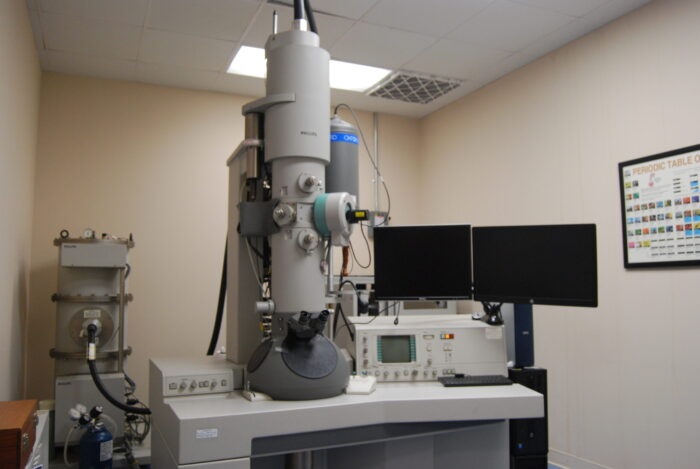Expand Your Knowledge
Our resource center archives our case studies, published articles, blogs, webinars, and image galleries. Discover ways microscopy has made a meaningful impact.

Transmission electron microscopy is used for material imaging and elemental composition analysis. The transmission electron microscope (TEM) is a versatile analytical microscope for material characterization. In a TEM, a very high-energy electron beam is placed on a sample that is thin enough to be partially electron transparent, and the electron “shadow” of the sample is viewed and digitally recorded.
High resolution imaging shows morphology, aggregate form and internal structure of particles and materials. In addition, the images of the particles can be used to measure the particle size distribution of the material.
With an energy dispersive x-ray spectrometer (EDS) coupled to a TEM, we can easily obtain elemental composition. In addition, our TEMs are also equipped with electron diffraction capability. With EDS and electron diffraction abilities, we can confidently identify an unknown material.
Sample preparation for TEM analysis is critical and often time-consuming. Samples must be extremely thin or made extremely thin to allow for the electron beam to completely penetrate the sample. Depending on the composition of the sample, we utilize ultramicrotomy. Using energy dispersive x-ray spectrometry, brightfield and darkfield imaging, and electron diffraction, our TEM is used for material imaging and elemental composition analysis. Analytical services are used to characterize a wide range of materials.
Other materials may require more specialized preparation techniques. The procedure may follow established methods or may be developed in-house.
For more information, please contact us at 770-662-8509 or info@mvainc.com.